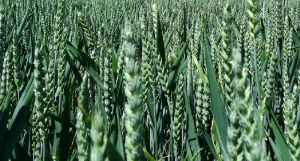Oat

Cultivated oats (Avena sativa L.), sometimes called "common oats", "Byzantine oats" or simply "oats", are a species of monocotyledonous plant in the Poaceae family (grasses), subfamily Pooideae. Known only as a cultivated crop (cultigen), this species was probably domesticated in central and northern Europe around 2500 BC.
These are annual herbaceous plants with erect stems (culms) and inflorescences in loose panicles with drooping spikelets.
Oats are grown as a cereal or as a fodder crop to be cut green; their tender, sweet shoots are a favourite with farm animals. It is one of the straw cereals and is mainly used in animal feed (especially for horses).
In addition to cultivated oats (Avena sativa), the Avena genus includes other species cultivated at certain times (Avena byzantina C Koch, Avena abyssinica Hoscht, Avena strigosa Schreb, Avena brevis Roth, Avena hispanica Ard. and Avena nuda L.) and weed species, including wild oats(Avena fatua) and sterile oats (Avena sterilis).
These grasses have neither the hardiness nor the rapidity of vegetation of rye, and are also more demanding than rye in terms of soil quality, but their stems harden less quickly, which is an appreciable advantage from a fodder point of view. Apart from its fodder quality, oats have the advantage of only occupying the soil for a relatively short time.()